Abstract
A total of 523 cardiac surgical discharge summaries were searched for recorded evidence of adverse neurological events occurring between operation and time of discharge. Neurological events were recorded in 31 and included one or more of seizure disorder (n = 16), pyramidal signs (n = 11), extrapyramidal signs (n = 8), coma (n = 6), and neuro-ophthalmic deficits (n = 6). There were significantly more adverse neurological events after repairs for arch anomalies (16.6% of cases). There was also an association with the length of cardiopulmonary bypass and a period of low perfusion pressure either intraoperatively or postoperatively. Of the 19 out of 23 survivors in whom long term outcome data were available, four were normal and six had persisting neurological problems directly related to the perioperative period. In a further nine of the 19 survivors, established preoperative neurodevelopmental abnormality probably contributed to their present neurological status, in addition to perioperative events. In view of the way these data were collected, this study must represent the minimum incidence of neurological events in children undergoing cardiac surgery.
Full text
PDF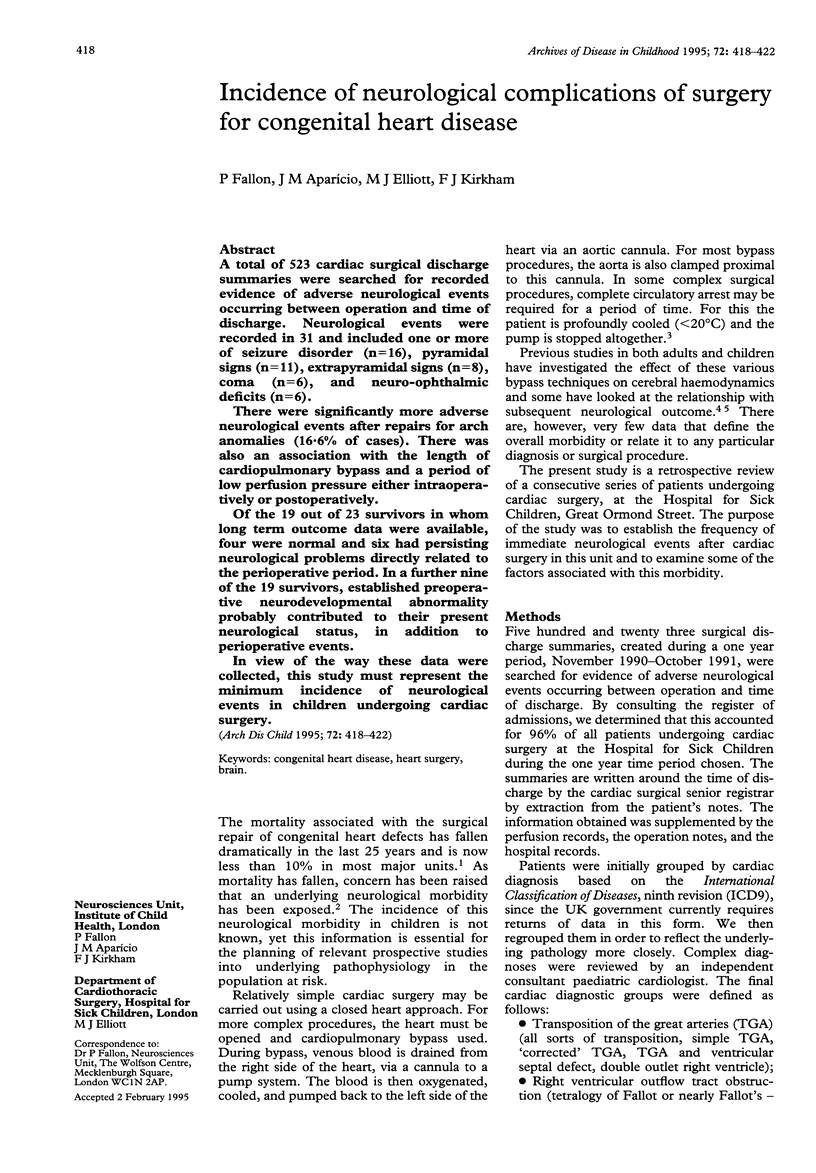
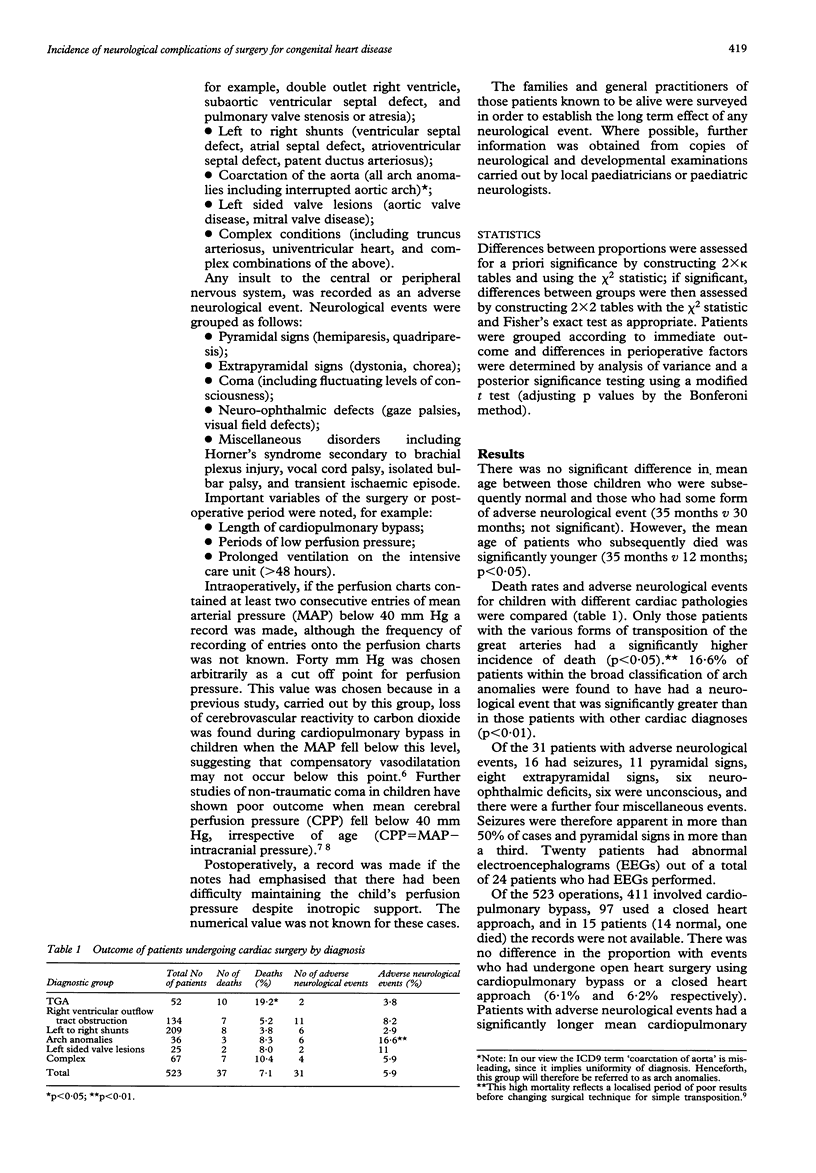
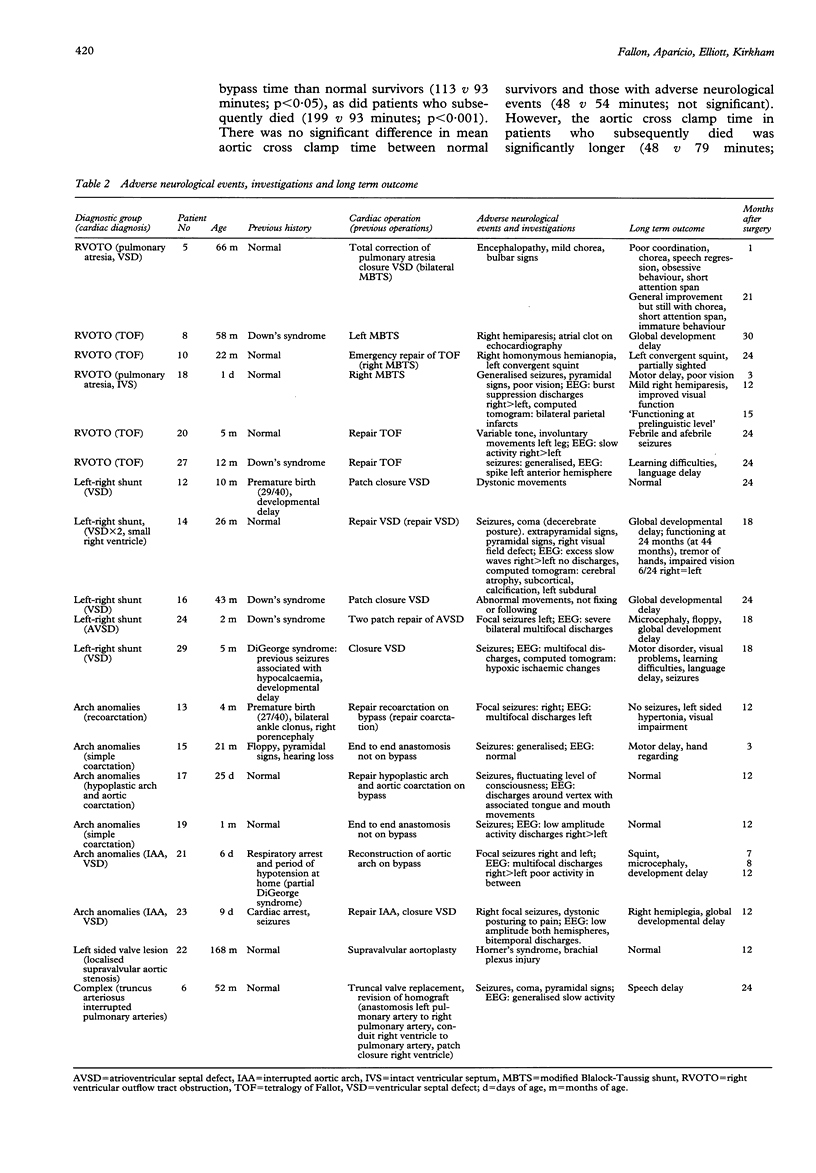
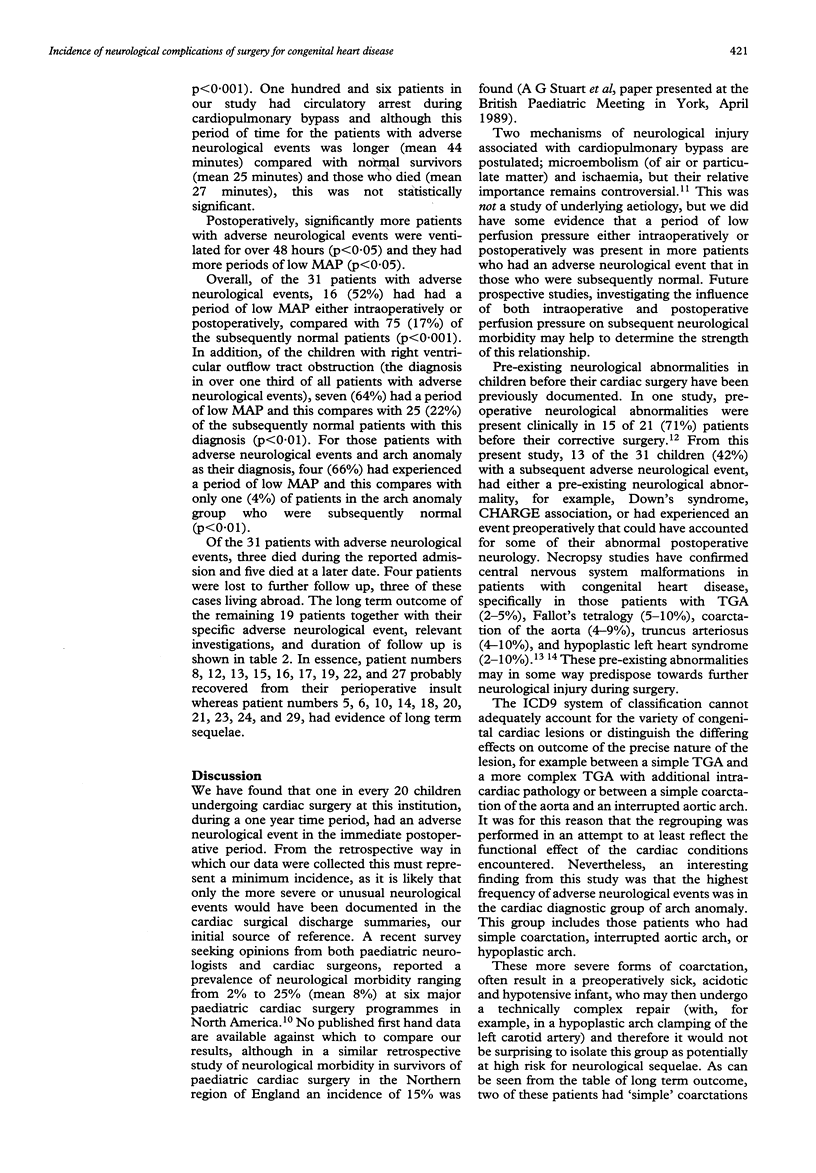
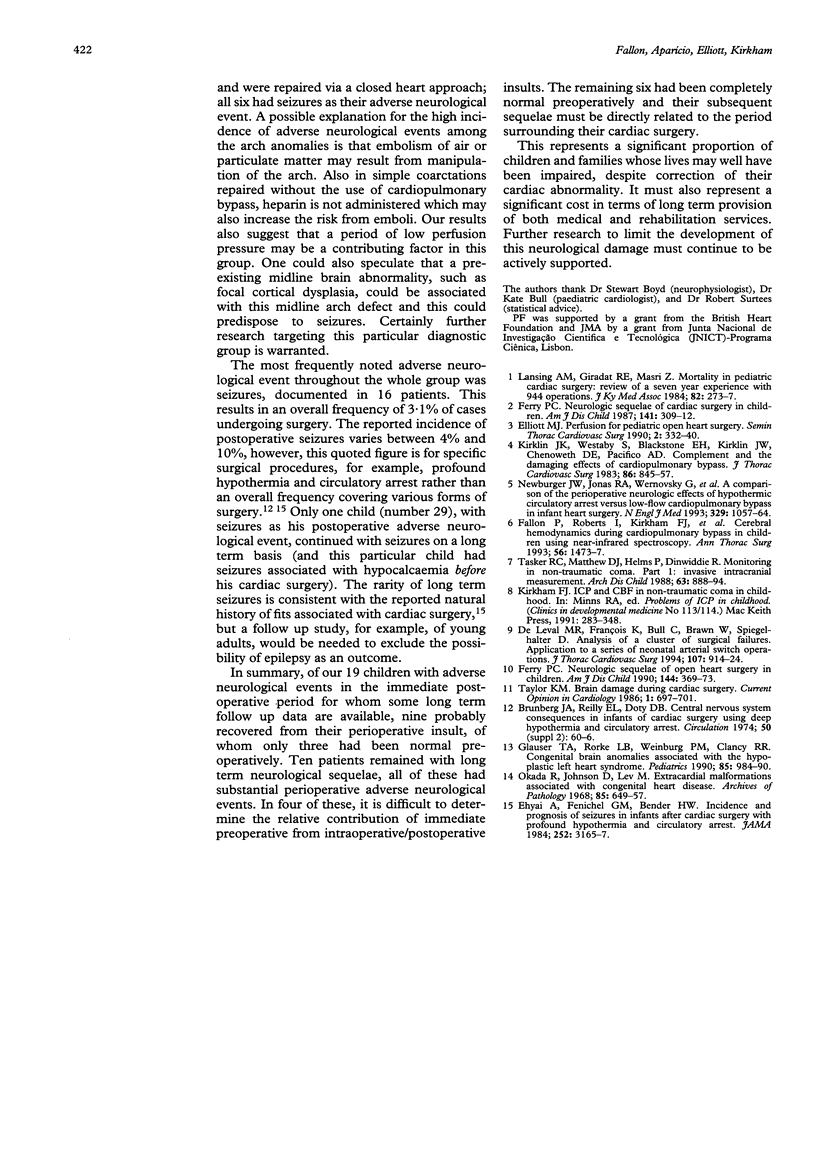
Selected References
These references are in PubMed. This may not be the complete list of references from this article.
- Ehyai A., Fenichel G. M., Bender H. W., Jr Incidence and prognosis of seizures in infants after cardiac surgery with profound hypothermia and circulatory arrest. JAMA. 1984 Dec 14;252(22):3165–3167. [PubMed] [Google Scholar]
- Elliott M. J. Perfusion for pediatric open heart surgery. Semin Thorac Cardiovasc Surg. 1990 Oct;2(4):332–340. [PubMed] [Google Scholar]
- Fallon P., Roberts I., Kirkham F. J., Elliott M. J., Lloyd-Thomas A., Maynard R., Edwards A. D. Cerebral hemodynamics during cardiopulmonary bypass in children using near-infrared spectroscopy. Ann Thorac Surg. 1993 Dec;56(6):1473–1477. doi: 10.1016/0003-4975(93)90733-x. [DOI] [PubMed] [Google Scholar]
- Ferry P. C. Neurologic sequelae of cardiac surgery in children. Am J Dis Child. 1987 Mar;141(3):309–312. doi: 10.1001/archpedi.1987.04460030087032. [DOI] [PubMed] [Google Scholar]
- Ferry P. C. Neurologic sequelae of open-heart surgery in children. An 'irritating question'. Am J Dis Child. 1990 Mar;144(3):369–373. doi: 10.1001/archpedi.1990.02150270119040. [DOI] [PubMed] [Google Scholar]
- Glauser T. A., Rorke L. B., Weinberg P. M., Clancy R. R. Congenital brain anomalies associated with the hypoplastic left heart syndrome. Pediatrics. 1990 Jun;85(6):984–990. [PubMed] [Google Scholar]
- Kirklin J. K., Westaby S., Blackstone E. H., Kirklin J. W., Chenoweth D. E., Pacifico A. D. Complement and the damaging effects of cardiopulmonary bypass. J Thorac Cardiovasc Surg. 1983 Dec;86(6):845–857. [PubMed] [Google Scholar]
- Lansing A. M., Girardet R. E., Masri Z. Mortality in pediatric cardiac surgery. Review of a seven-year experience with 944 operations. J Ky Med Assoc. 1984 Jun;82(6):273–277. [PubMed] [Google Scholar]
- Newburger J. W., Jonas R. A., Wernovsky G., Wypij D., Hickey P. R., Kuban K. C., Farrell D. M., Holmes G. L., Helmers S. L., Constantinou J. A comparison of the perioperative neurologic effects of hypothermic circulatory arrest versus low-flow cardiopulmonary bypass in infant heart surgery. N Engl J Med. 1993 Oct 7;329(15):1057–1064. doi: 10.1056/NEJM199310073291501. [DOI] [PubMed] [Google Scholar]
- Okada R., Johnson D., Lev M. Extracardial malformations associated with congenital heart disease. Arch Pathol. 1968 Jun;85(6):649–657. [PubMed] [Google Scholar]
- Tasker R. C., Matthew D. J., Helms P., Dinwiddie R., Boyd S. Monitoring in non-traumatic coma. Part I: Invasive intracranial measurements. Arch Dis Child. 1988 Aug;63(8):888–894. doi: 10.1136/adc.63.8.888. [DOI] [PMC free article] [PubMed] [Google Scholar]
- de Leval M. R., François K., Bull C., Brawn W., Spiegelhalter D. Analysis of a cluster of surgical failures. Application to a series of neonatal arterial switch operations. J Thorac Cardiovasc Surg. 1994 Mar;107(3):914–924. [PubMed] [Google Scholar]


